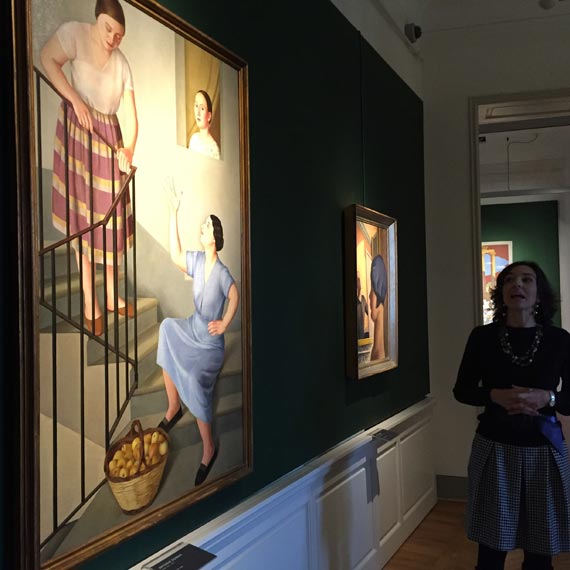
Up until the 10th of January 2016, take the extraordinary opportunity to go admire rarely seen works of art from the 20th century currently being hosted at the beautiful Villa Bardini in Florence. It is the chance to see quiet exhibit in the uncrowded rooms within the apartment of the villa, as well as enjoy the wonderful views of the city below, views that rival those seen from across the hill from the Piazzale Michelangelo.
Named “Toscana ‘900: From Rosai to Burri, Innovative Itineraries through Florentine Collections“, I was invited along with 3 other bloggers to visit the exhibit in the company of one of the curators of the exhibit, Lucia Mannini. She and co-curator Chiara Toti, were aware that there were many works of art from this time period collected privately, and set out to locating them (and then getting permission to gain access, and then again to borrow). These works belong to private banks, Florence’s two major art schools and private homes, as well as within the archives of libraries that require special access. This is what makes the exhibit quite special, as it is unlikely these particular set of paintings, drawings, books and sculptures will ever be together again… and many unlikely to be shown in public ever again!
The exhibit is part of a larger set of exhibits organized this year across all of Tuscany focused on 20th century works of art, whether from Tuscans or other artists that spent time in Tuscany. We might forget this but Florence has continued to attract artists through the centuries, not just during the Renaissance ;-). And at the turn of the last century, many well-known artists came, spent time in Florence, meeting each other in Florence’s cafe’s to discuss and learn from the past and each other.
Free Guided Tours
Our visit was really enjoyable in the company of a guide; in our case, one of the curators was with us. For those who speak Italian, you can join in on a free, curator-led visit this December:
– Sunday December 6 and 20, at 11am, as well as Tuesday, December 8th, at 3:30pm. You do need to either call or email to book a spot in these visits: call 055/200.66.206 by 5pm on Friday before the visit, or email mg.geri@bardinipeyron.it.
– If you can’t visit on these dates, don’t worry: they offer free guided visits every Saturday and Sunday at 4:30pm and 5:30pm where no reservation is required. These visits are in Italian, but if you call or email (at the info above) at least a day or two ahead of time, they will arrange an English-speaking guide for you.
The exhibit
Getting back to the exhibit, within the villa’s rooms the exhibit has been divided into four sections based on the collections from which works were borrowed: the bank, the art schools, the libraries and private homes. The exhibit brings to light the existence of a “silent” legacy that is no less interesting compared to more famous collections and includes works by De Chirico, Fontana, Donghi, Severini, Rosai, Picasso, Kandinsky and Henry Moore.
Here’s a highlight of the sections and some of the works I particularly enjoyed in each: please share your favorites as well with us on Facebook or Instagram or in the comments below.
The Bank: Monte Paschi di Siena
The 3 rooms dedicated to this section mostly come from a collection from the early 1980s put together by the Banca Toscana, a Florentine bank that has since then been encompassed by the much larger Monte Paschi di Siena bank. The paintings were actually purchased after a careful study of artists and works from that period, to both serve as decoration within the banks as well as worthy of investment.
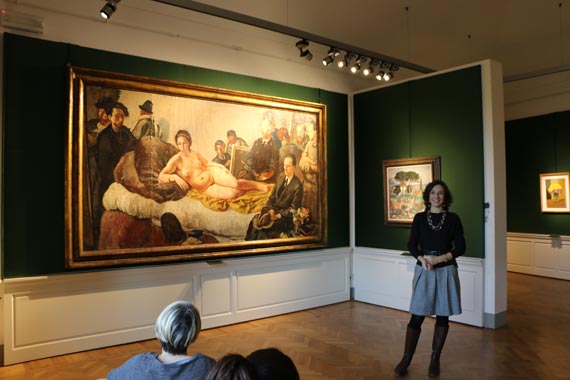
The new interest in the Novecento period of work also resulted in many paintings that had stayed in private collections or hidden came out into the market, permitting the bank these acquisitions. This was the case for the monumental work by Felice Carena from 1928 called “The School”. It had been presented at the Venice Biennale that year, and the following year made its way to the US where it won the Carnegie Prize in Pittsburgh. The work was bought and donated to the Museum of Fine Art by the Lehman family, and made its way back to Italy in 1980 when the museum decided the painting no longer matched its cultural and collection’s interests any longer.
At that time, Carena was a professor at the Accademia of Fine Arts in Florence, and the painting shows an academic lesson of the nude figure with the teacher as well as students surrounding and painting her. While Carena was mostly known for his still-lifes (which he did include in the far right corner), this coincided with the “return to order” movement of the time that thought the human body was more important.
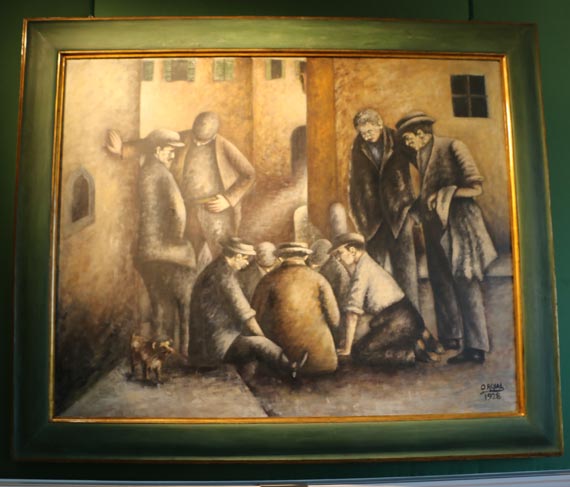
Directly across, the Ottone Rosai painting “The Toppa Players” from the same year offers a striking contrast. Between 1926 and 1928, Rosai was very critical of bourgeois conventions and what critics acclaimed to be “in”, thus many of his works concentrated on showing the lower classes. Here, you can see a street of Florence where working men would stop and play this simple game with humid clay hit hard against the ground.
The libraries
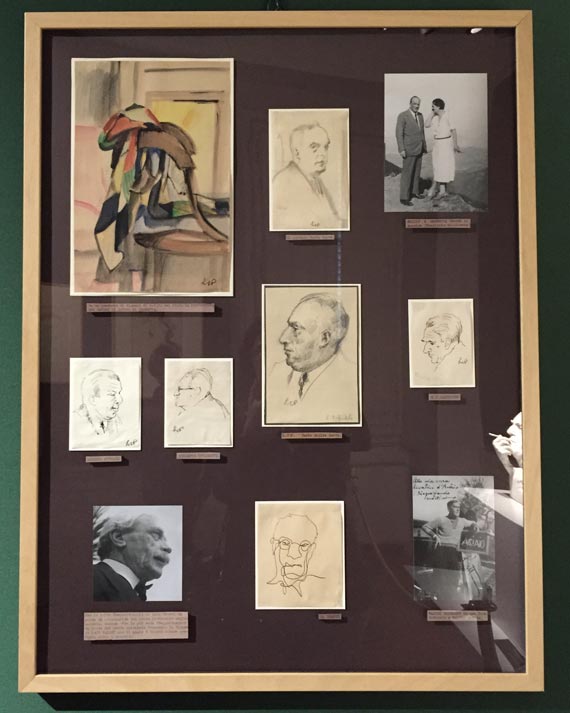
The Contemporary Archive “A. Bonsanti” from the Gabinetto G.P. Vieusseux
Alessandro Bonsanti, who was director of the Archive from 1941 to 1980, collected documentary material which included sketches, drawings, and sculpture to conserve the memory of the Novecento, a reflection of the world of art and culture then. The room thus contains gesso sculptures by Quinto Martini of teachers and friends, the scrapbooks by artist Leonetta Pieraccini, also wife of art critic Emilio Cecchi, contains her sketches of the important and illustrious contemporary cultural icons that visited their home, including Luigi Pirandello and T.S. Eliot, and two self-portrait sketches by Pier Paolo Pasolini (the collection has over 300 of his drawings).
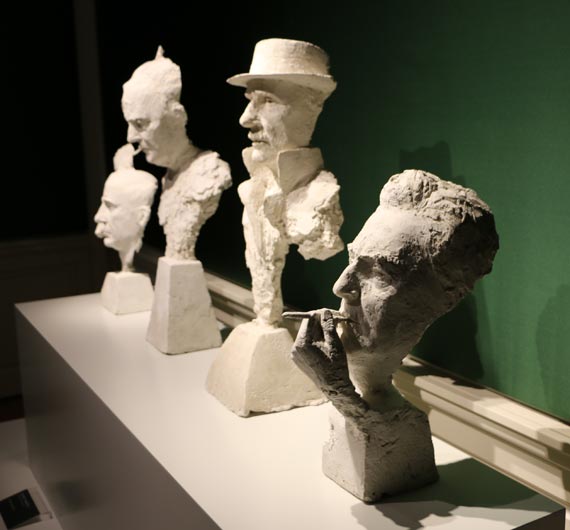
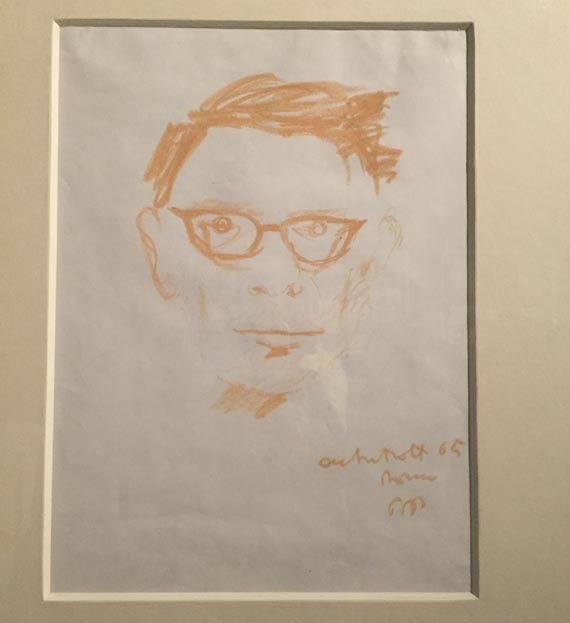
The National Library
From the Bertini collection kept in the Rare Books and Manuscripts section within the National Library comes the selection of artist’s books, printed in limited or single editions, that you can admire in this room. From Fascist-era tin covered books to a pop-up book by Andy Warhol, from a box full of paper scraps by Marcel Duchamp to books illustrated by Salvador Dalí, Joan Mirò, and Kandinsky, the room is a surprise and a pleasure to roam. The large colorful pages in aluminum by Lucio Fontana accompanied by poems by Salvatore Quasimodo with holes across the pages show how creative “books” can be.
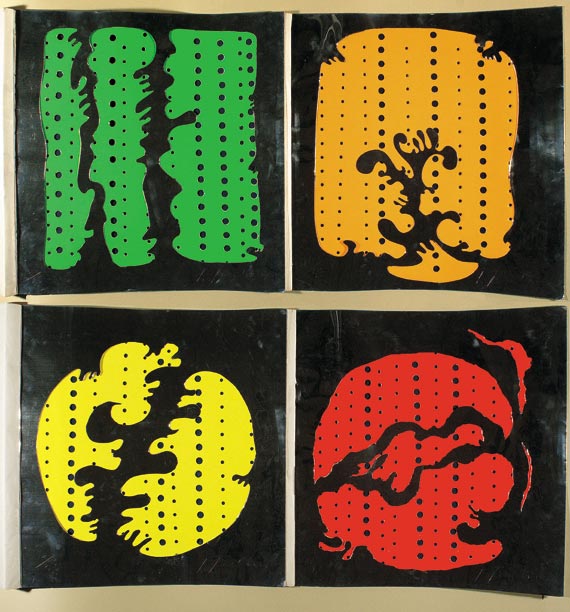

The art schools
Accademia of the Fine Arts
In 1933, Felice Carena became director of the famous art academy and, in 1935, he wrote to over 200 contemporary artists asking them to donate a piece of their work, at any stage of the creative process, to be used as a teaching tool and to be shown to the public on occasion. All of the artists sent in a work, which includes sketches and complete drawings of many subjects. The human figure was chosen for the selected drawings on display in this room, which include works by Felice Casorati and Antonio Donghi, whose other work, Women on the Stairs, was chosen as the cover for the exhibition.
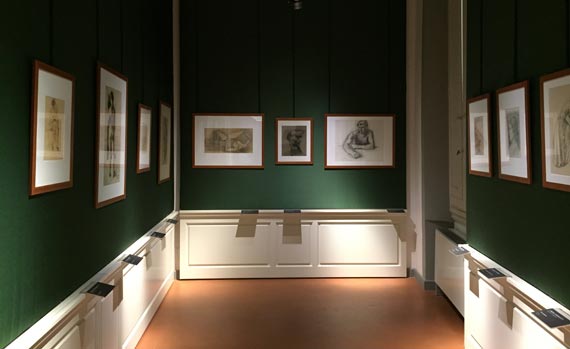
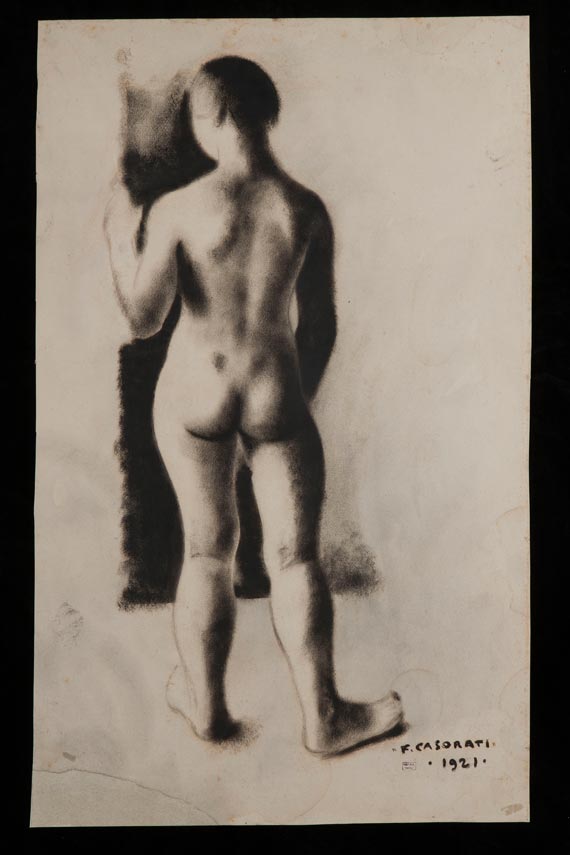
The Institute of Applied Arts in Porta Romana
The Institute moved from the Santa Croce area to Porta Romana in 1924 and became one of the leading schools of applied arts not only in Italy, but in Europe between the 1920s and 1930s. While great changes occurred after World War II, every class kept a collection of the best “end-of-year” projects created by its students in all mediums, from ceramics to textiles, drawings, jewelry, photographs and prints. This small room (and the corridor leading up to it) has but a small selection of the works created by its students, some of them unknown as time – and the disorganized manner in which the collections have been kept – has made it impossible to trace.
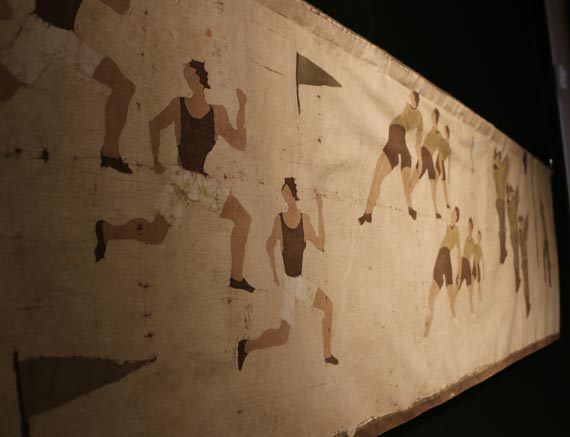
The Private Homes
The last two rooms of the exhibit contain works of art generously lent to the exhibit by private collectors in Florence that live day to day with these works in their living and dining rooms. Right before you enter, there are photographs of the inside of these homes which give you a glimpse at how it is possible, aside from beautiful, to decorate a home with works of art. Works here include a drawing by Picasso and drawings by Henry Moore, large panel paintings by Ardengo Soffici, the painting above by Primo Conti and more works by Thayaht, Ottone Rosai, Felice Casorati, Giorgio de Chirico and Lucio Fontana, and sculpture by Libero Andreotti and Kan Yasuda.
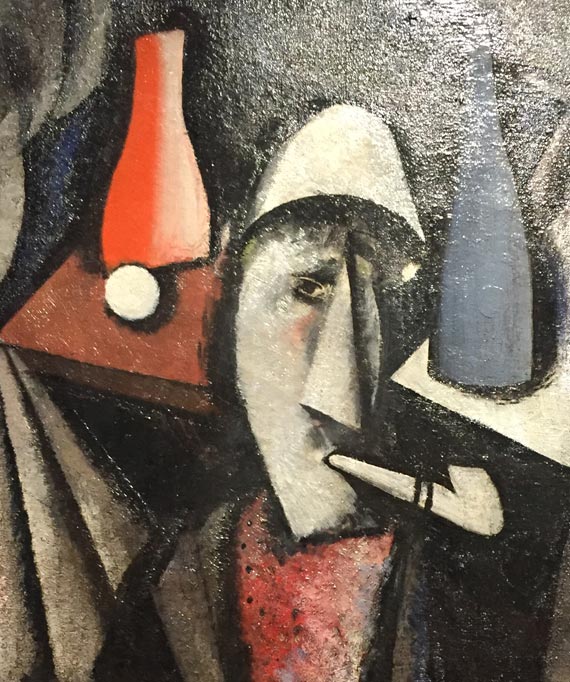
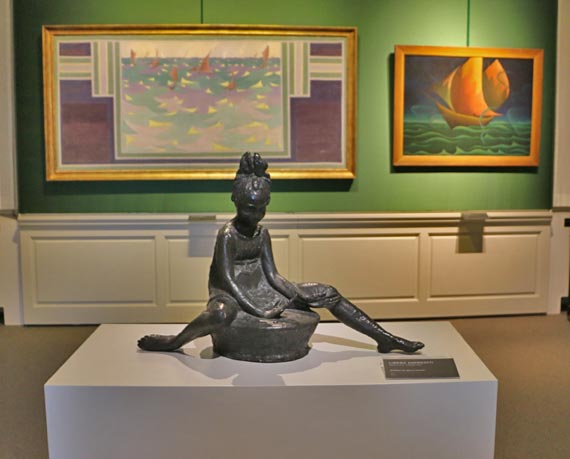
Whether you like contemporary art or not, you will be very surprised at the masterpieces found within these private collections, as I was. These photos are really just to give you a taste of all of the treasures hiding up at Villa Bardini this month – so head up the hill along Costa San Giorgio and discover this exhibit, the villa and the gardens: they will be a perfect addition to your time in Florence!
Toscana ‘900. From Rosai to Burri. Innovative itineraries through Florentine collections
Villa Bardini, Florence
Costa San Giorgio, 2 – Until January 10, 2016
Opening hours: Tuesday-Sunday 10am-7pm, Monday Closed. Last entrance at 6pm
Tickets € 8 full, reduced € 6 for Toscana Pass holders – € 10 full ticket includes the garden as well (recommended)
For more details on the villa and gardens, see the official site here.
The exhibit is part of a large region-wide program sponsored by the Ente Risparmio di Firenze bank that brings together over 100 museums in Tuscany that have works from the Novecento, or the 1900s, as they are more commonly called in Italian. In 2015, all of the museums came together to offer a network of exhibits, itineraries and tours amongst them with Tuscan art from the 19th century as a unifying theme. For additional exhibits and events, see www.toscana900.com
About Lourdes Flores
An American living in Florence for over 10 years, Lourdes continues to explore and discover new places in Tuscany with the eyes of a tourist but with the experience of living in Italy. She shares her experiences on this blog and website, particularly offering lots of travel planning help on the Forum!